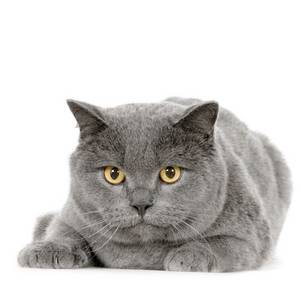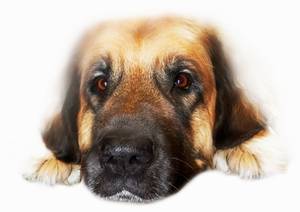Does My Dog or Cat Have Fleas?

Fleas can sometimes be seen jumping on your pet, but in many cases, the only signs of fleas on animals are scratching, licking and the presence of brownish 'flea dirt' in the pet's coat.
Fleas are insects which suck blood from animals. However only adult fleas are found on pets. They are usually 1/16-1/8 inch long, red-brown in color, with three pairs of legs � the last pair larger than the others, and adapted for jumping. Fleas are wingless, so they rely on jumping to get from place to place, rather than flying. Their bodies are flattened laterally (side to side), covered with a hard exoskeleton made of chitin, which is shiny, helping them to travel through the fur of your cat or dog, and helping prevent them being squashed!
There are several ways to check for fleas on animals. The first is to brush your pet with a special fine-toothed flea comb. The teeth of the comb are so close together that the flea cannot fit between them and is pulled from the fur when the comb is used.
You can also part your pet's fur and look at the skin for fleas; however this can be laborious and not overly successful. The other problem with these methods is that many animals, especially those which are very itchy, have very few fleas, as they remove them all when grooming.
|
Anti-flea treatments
|
Pet Shed's most popular solutions for ridding your pet of fleas
|
The best way to check an animal for the presence of fleas not to look for the fleas themselves, but for evidence that they are in the vicinity. One method is to either rub or flea-comb your pet's coat over large piece of white paper to catch the flea dirt (feces) deposited in the fur, and then wet the paper. Flea dirt initially appears brown/black, as their feces is essentially dried blood. When this is dampened, it turns reddish-brown, resembling liquid blood.
However only a small proportion of the flea population is actually on a pet at any one time � the eggs, larvae and pupae (cocoons) are actually found on the ground. The following graph shows the relative proportions of the total flea population:
Most pupae are found in the carpet, or areas where your pet rests or spends a lot of time. With dogs, problem areas tend to be near doors, where they enter or leave the house, near their food bowl, on their bed, on, or at the base of furniture. With cats, if they like to sleep on top of things, such as a refrigerator or cabinet, keep these in mind as well1.

A good way to test areas for the presence of emerging fleas is to walk through them in white socks1,2. The pressure and vibrations caused will trigger the adult flea jump reflex. The fleas will stick in the sock fibers and stand out against the white coloring. Additionally, flea feces (the food source for larvae) may stick to the socks and be seen as black or brown specks.
Alternatively, a "light trap" can be set overnight. With the lights in the house turned off, place a small lamp near a bowl containing water and a little detergent, directing the light into the bowl. Fleas will jump towards the light and fall down into the water1. As they cannot swim, expect to see a few drowned fleas in the bowl in the morning if the area has a problem.
Once you have confirmed the presence of fleas, treat them! There are many good on-animal and area-based products designed to remove the flea problem. However remember to treat both animals and your pet's living area to ensure you kill all flea stages. Your veterinarian can advise you the most appropriate products for your pets.
|
References
|
| Lyon, WF (1997). "Fleas". Ohio State University Extension Fact Sheet. http://ohioline.osu.edu
� Vail, K. "Chemical and Nonchemical Management of Fleas". The University of Tennessee Agricultural Extension Service. http://www.utextension.utk.edu |